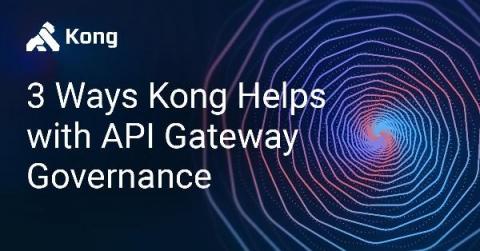Systems | Development | Analytics | API | Testing
April 2021
Deploying With Confidence Using Kong Gateway and Spinnaker
Change is the primary cause of service reliability issues for agile engineering teams. In this post, I’ll cover how you can limit the impact of a buggy change, making it past your quality gates with Kong Gateway and Spinnaker for canary deployment.
3 Ways to Protect Your APIs With Kong Konnect and Fastly (Signal Sciences)
Fastly’s next-gen WAF (formerly Signal Sciences) integrates with Kong Konnect to block malicious requests to your services. Kong Gateway provides a robust and secure enterprise API management platform to front web traffic. In partnership, Fastly focuses on Layer 7 application security for that traffic. This article will explain how Kong Konnect and Fastly work together.
Configuring a PingFederate SAML Connection in DreamFactory
Better protect your web apps and APIs against threats and fraud with Google Cloud
With web applications and public APIs becoming increasingly important to how organizations interface with their customers and partners, many are turning to dedicated tools that can help protect these assets.
Developing a Kong Gateway Plugin With Go
Developing a Kong Gateway Plugin With Go
This tutorial shows you how to create a custom Kong Gateway plugin with Go programming language. The sample plugin I created adds an extra layer for security between consumers and producers. The way it works is it identifies consumers through a consumer-key from a query string. Without this parameter, they’ll get an error message.
SwaggerHub 101: Learning the Basics
[Online Meetup] Kong Gateway 2.4
How to Automate Service Mesh Observability With Kuma
The more services you have running across different clouds and Kubernetes clusters, the harder it is to ensure that you have a central place to collect service mesh observability metrics. That’s one of the reasons we created Kuma, an open source control plane for service mesh. In this tutorial, I’ll show you how to set up and leverage the Traffic Metrics and Traffic Trace policies that Kuma provides out of the box. If you haven’t already, install Kuma and connect a service.
Why Organizations Should View APIs As Products
How do APIs Help Integrate Your Organization?
Getting Started with Kong Mesh and Open Policy Agent
In Kong Mesh 1.2, we added a number of new features to help enterprises accelerate their service mesh adoption. One of the major new features was native Open Policy Agent (OPA) support within the product. In the demo image above, you can see a number actions taking place across a simple web application. These “actions” ultimately are various GET, POST, and DELETE methods (API calls) across various tiers of our microservice application.
Kong Gateway (OSS) 2.4 Released
Hello Kong Nation 👋 ! We’re back with another fresh release of Kong Gateway (OSS). Read on for the latest release information.
How to Monitor Azure API Management Performance with the Moesif Plugin
Azure API Management (APIM) is a powerful platform that enables you to publish and scale APIs while ensuring they are secured. One of the great features of Azure APIM is that you can add plugins and transforms to your APIs without any code change or restarts. These capabilities are deployed using XML Policies which are a collection of statements.
Are Data Silos Hindering Your Digital Transformation?
Common Challenges Associated with the Composable Enterprise
DreamFactory 4.6 Released
Kong Gateway for Beginners: Adding a Service, Route and Plugins
Kong Gateway Tutorial: Up and Running With a GUI in <15 Minutes
Keep in mind that these instructions are a starting point. You may need to change some of the steps to harden your environment when running in production. For more detailed information, visit our Kong Gateway documentation.
Governing API Management and Connectivity
3 Ways Kong Helps With API Gateway Governance
Almost all aspects of businesses are transforming to digital and internet-based solutions. It’s happening from the ground up, starting with developers. You’re building applications for your organizations, and you’re racing to get software and services out to the market faster. The faster your company moves, and the more you build, the more likely you need an API gateway governance strategy.
Naming API Endpoints
How To Structure A Successful Digital Transformation Strategy
Microservices and Master Data Management
GraphQL: Building a consistent approach for the API consumer
Developers use application programming interfaces, or APIs, to assemble data and functionality for new mobile or web apps, but when it comes to interacting with APIs, developers are often faced with two popular options: REST or GraphQL. In this article, we’ll explore how these approaches compare, and we’ll offer REST API best practices that can be applied to build a more consistent experience for GraphQL API consumers.




















